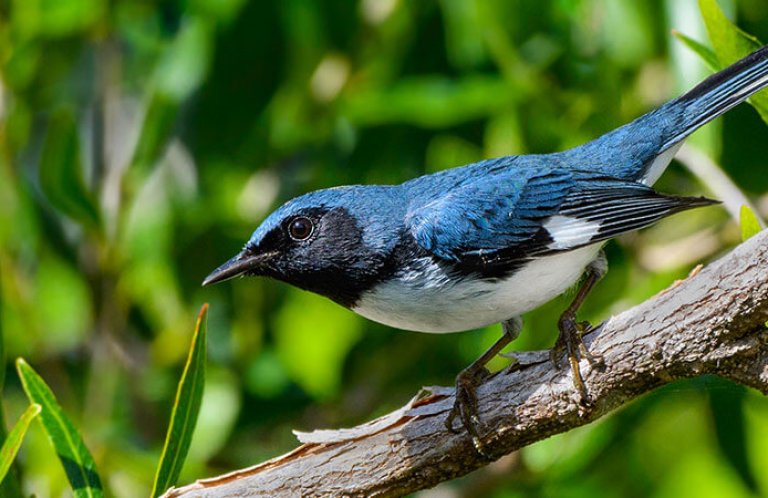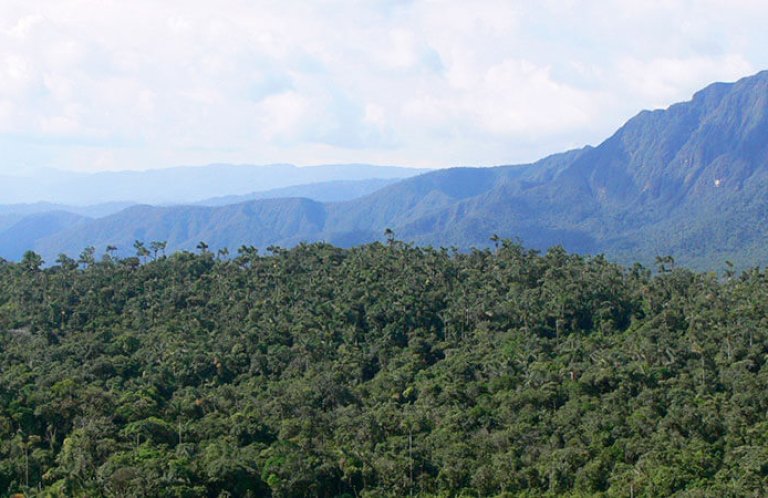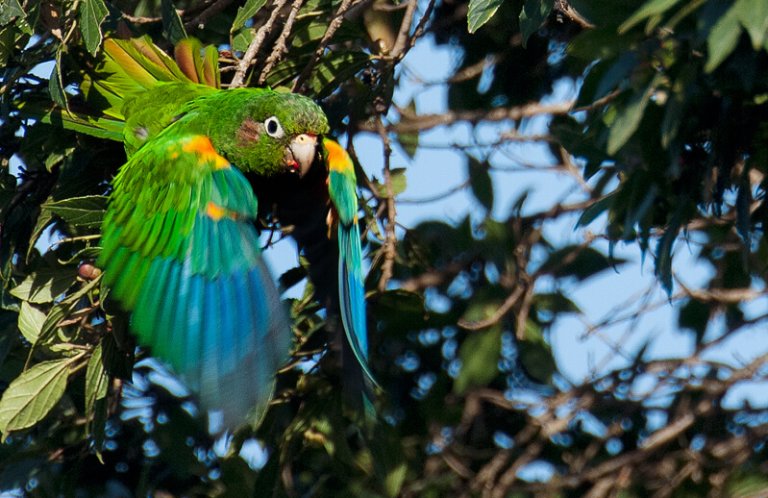One Million Trees to Revive Forests and Support Communities in Northern Peru
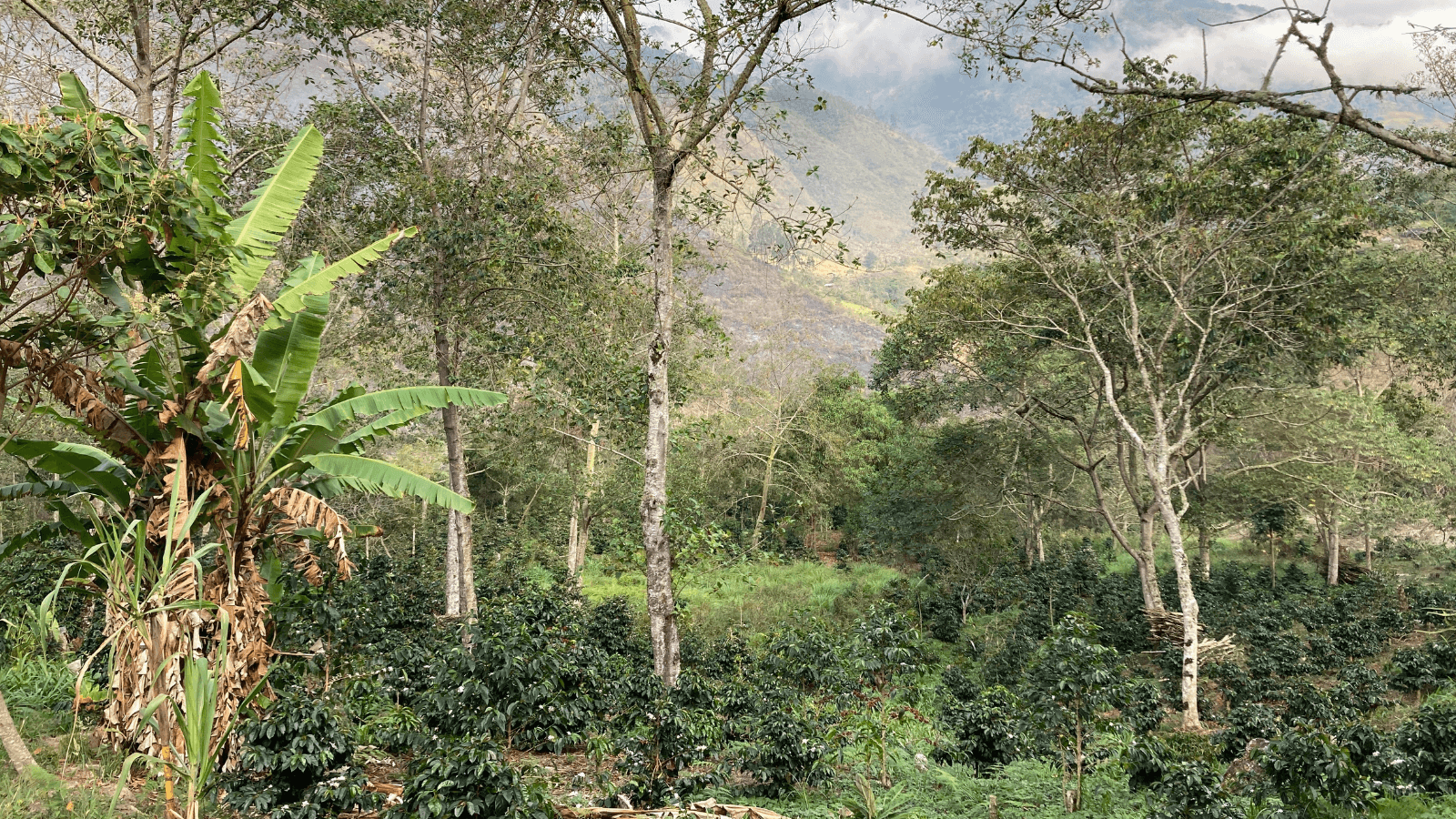
For migratory birds like the Canada Warbler and Olive-sided Flycatcher, the problem of habitat loss crosses borders and spans continents. It follows birds from their breeding grounds in the boreal forest of North America, to the stopover habitats they visit as they head south, to their Central and South American nonbreeding territories. From one season to the next, the forested habitats they rely on can vanish as they are cleared or altered to make way for development, agriculture, or mineral extraction.

In the Peruvian Andes, where many Canada Warblers and Olive-sided Flycatchers return after each breeding season, rural and campesino communities face uncertainty of a different kind brought on by ballooning inflation, the declining value of Peruvian currency, and the costs of living and doing business inching upward in tandem with the prices of everything from household goods to fuel and fertilizers. The expansive tracts of rich forested land around them — high-quality habitat for migratory songbirds and endemic species like the Vulnerable Long-whiskered Owlet and Ochre-fronted Antpitta and the Endangered Black-and-chestnut Eagle — can provide much-needed resources for people, too, from timber to valuable land for grazing cattle and growing crops.
The needs of birds and those of the people around them may seem to be at odds. In northern Peru's Amazonas and San Martin regions, however, Asociación Ecosistemas Andinos (ECOAN), an American Bird Conservancy (ABC) partner for more than two decades, is finding ways to support residents while also breathing new life into degraded pasturelands. This massive reforestation initiative involving more than 1 million native trees over nearly 2,000 acres has been primarily supported by the Neotropical Migratory Bird Conservation Act (NMBCA).
Preserving Fragile Forest Ecosystems
The region of northern Peru where ECOAN works falls within the Colán-Alto Mayo BirdScape, one of the dozens of areas throughout the Western Hemisphere identified as priority habitat for birds. BirdScapes, ABC's approach to conserving birds across their full annual cycle at a landscape level, encompass essential bird habitat where conditions are also ideal for fostering collaboration and relationships with local communities and farmers.
The Colán-Alto Mayo BirdScape includes 14 protected areas totalling a combined 1.7 million acres. Its sprawling cloud forests are among the most biodiverse habitats in the world. These misty montane forests, blanketed by clouds of water vapor rising from the Amazon, are perpetually humid, creating the conditions for flora and fauna to flourish. The forests of the Colán-Alto Mayo BirdScape host hundreds of species found nowhere else, like charismatic Ochre-fronted Antpittas, a long-legged, primarily ground-dwelling bird with rapid-fire, jerky movements that make it appear as though it is dancing. These hazy forested lands also provide vital habitat in the nonbreeding season for Swainson's Thrush, Cerulean Warbler, and Red-eyed Vireo.
The dense, lush forests are also fragile and very vulnerable to deforestation. They have proven to be fertile grounds for illegal logging operations and land trafficking (the unauthorized or illegal use of land), along with clearing to make way for monoculture crops and grazing for cattle. While deforestation in protected areas has averaged less than 1 percent (excluding Alto Mayo) over a more than 20-year period, in the Bosque de Protección Alto Mayo at the BirdScape's eastern edge, the situation has grown dire. This area is close to a region just outside the BirdScape's boundaries that is experiencing heavy deforestation. A military guard post was established to protect Bosque de Protección Alto Mayo from the encroachment of illegal logging and settlement activities.
Stopping deforestation is essential, but so is reforesting areas that have been degraded or cleared. And doing that is a community-wide effort.
Starting Small with Saplings
Tucked away in neatly maintained greenhouses, hundreds of small bags are lined up in orderly rows, each holding the tiny beginnings of a native tree pushing up through the soil. ABC partner ECOAN has carefully tended to generations of these trees for years, transplanting them to support reforestation efforts once the saplings grow large enough. So far, more than 1 million coffee shrubs and native trees including Alnus acuminata, Colubrina glandulosa, Ficus schultesii, Guazuma crinita, and Juglans neotropica have made their way from the greenhouse into the ground.

The saplings are planted throughout reserves and community-managed protected areas, most commonly in pasturelands that have been overgrazed and degraded. Fast-growing native tree species start as knee-high saplings, but in short order will grow tall enough to provide shady conditions conducive for slower-growing trees and vegetation to thrive. In addition to improving soil quality by fixing nitrogen and stabilizing the soil with their roots, in a few years, the young trees will provide habitat for endemic and migratory birds alike.
These tidy nurseries nurture much more than trees: they also support communities in building capacity for bird conservation and helping those communities prosper. ECOAN hires community members to operate the tree nurseries and oversee the collection of native tree seeds for propagation, soil preparation, maintenance, and transporting plants to areas undergoing restoration. Many locals take part in reforestation efforts and receive training and support to establish valuable native, fruiting trees, or coffee shrubs from ECOAN on their own lands.
Building Capacity the Bird-Friendly Way
Migratory songbirds and endemic species benefit from revitalizing previously degraded lands, and local communities can join them in reaping the benefits of a thriving forest. Alongside reforestation efforts, ECOAN and ABC are helping farmers adopt bird-friendly agricultural practices, like shade-grown coffee and silvipasture (integrating trees and livestock on the same land), that enable them to work the land while preserving the qualities that most benefit birds.
Along with native trees, ECOAN's nurseries are growing coffee shrubs and encouraging a shift to bird-friendly practices. Through technical workshops and outreach, coffee growers and local farmers discover how they can enhance their land for bird conservation while improving their capacity to fertilize lands that have already been cleared.
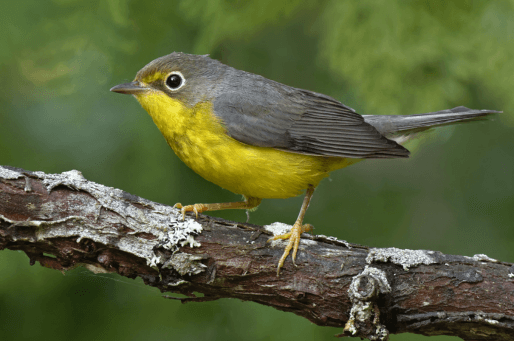
With time, some trees planted as part of the reforestation effort can be felled, providing wood for landowners without sacrificing the continuity of the tree canopy. What's more, the shade trees planted by ECOAN can protect crops during bad weather and act as “living fences” to delineate property lines, in addition to providing ecosystem services like erosion control and watershed protection. They also improve the soil quality, leading to an even tastier cup of coffee that fetches a higher price on the market. Bird-friendly practices are not just good for the birds: they are also practical and profitable. Buying bird-friendly products is a great way to support birds and habitat conservation at home. Make sure to look for the certification label on coffee and chocolate.
Branching Out to Welcome Visitors
In the Colán-Alto Mayo BirdScape, the material needs of people can be reconciled with the needs of birds and other wildlife, allowing for the creation of large conservation landscapes across hundreds of thousands of acres of cloud forest. This expanse of forestland offers high-quality, connected habitat — the kind of habitat that is essential for so many endemic and migratory birds.

That habitat attracts visitors, too. ABC and ECOAN support local, community-based businesses in developing the infrastructure and marketing needed to welcome ecotourists. The ecotourism industry provides a source of revenue that supports the business owners and staff while contributing to the long-term sustainability of protected areas. Bird lovers flock to reserves throughout the Colán-Alto Mayo BirdScape, like Abra Patricia and Huembo, where local guides with extensive knowledge of the land take them into the forests to spot coveted endemics like the Near Threatened Marvelous Spatuletail.
Big things can start small, like the more than 1 million trees that were once saplings in a nursery. Now, they are part of the story of the revitalization of Peru's Colán-Alto Mayo BirdScape, a reforestation effort that benefits birds and the people who live alongside them.





































